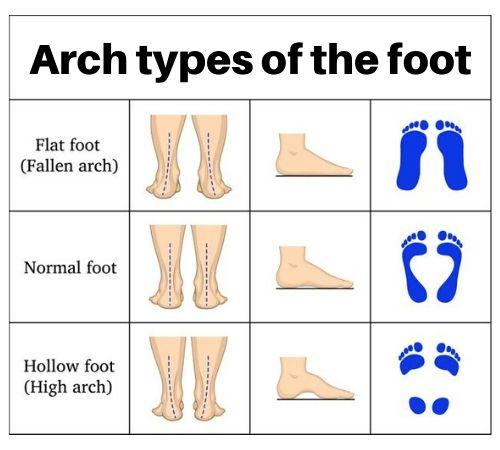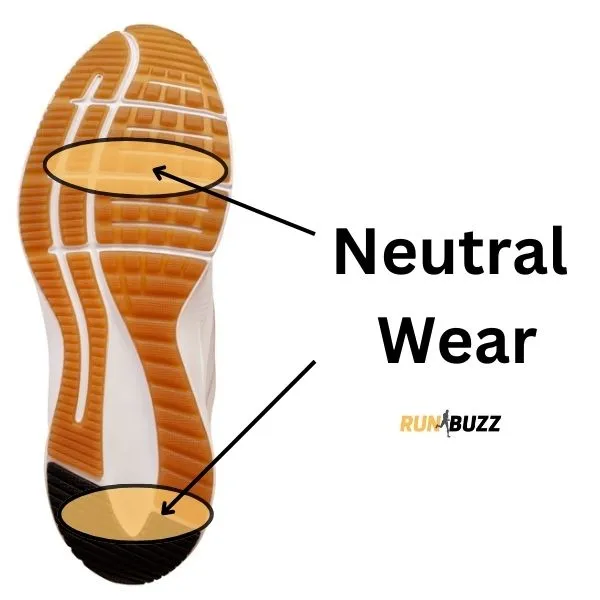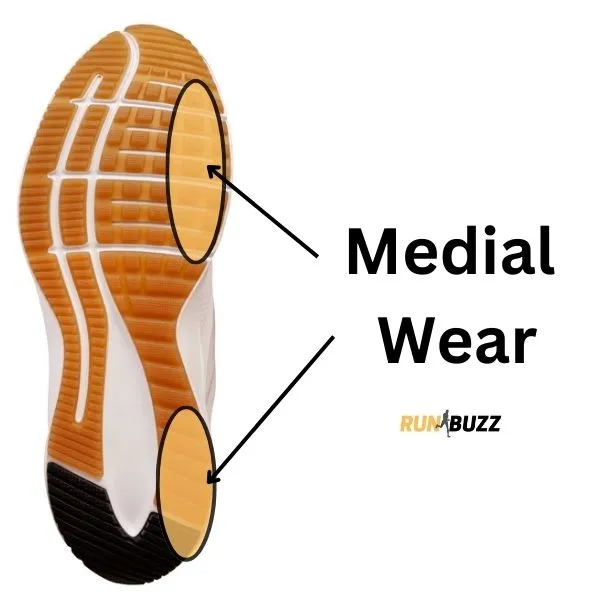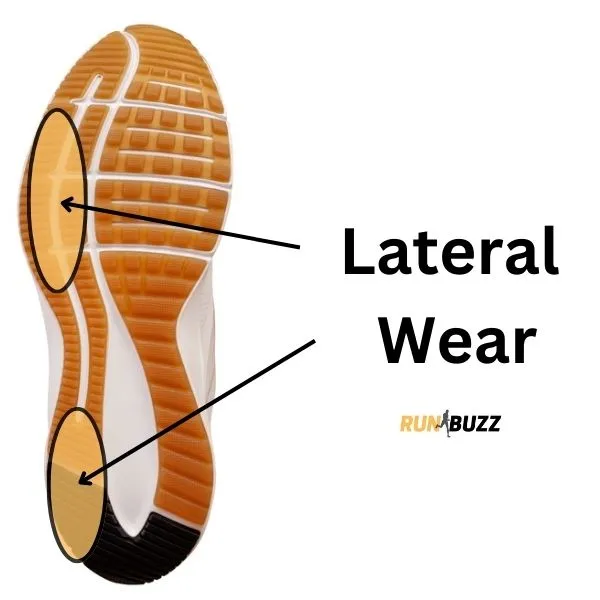How To Choose The Right Running Shoe For You
In this guide, I show you how to choose the right running shoe for you. Picking a pair of running shoes that fits your feet and style of running will not only feel great, but it will give you the level of protection you need to help reduce ground impact forces when you run.
Picking the right running shoe can be confusing. There are so many shoe brands and shoe models available it can be hard to know where to start. Do you pick the latest trendy shoe, or go with a traditional brand? Do you need a treadmill test, or can you just select a pair off the shelf at your local running store.
Picking a shoe can be hard, but it doesn’t have to be.
As I go through this guide, I will walk you through the steps to identify your foot anatomy, pronation levels, levels of shoe cushioning, and discuss what to look for so you can pick out the right running shoe for your needs.
Ultimately, what you are looking for is a pair of shoes that feels great on your feet.
Step 1: Identify Your Level Of Pronation
The first piece of information you should consider is your level of pronation. In this section, I will help you determine if you have any under or over pronation tendencies.
Once you have identified your level of pronation, write it down. You will need it later when you get ready to pick out which shoe model is best for you. Running shoes are classified into categories where knowing this will help guide you in the right direction so that your running shoe works with your footstrike and gait.
What is Pronation?
Pronation is the natural movement your foot makes when your foot lands on the ground, and how and in what way, your arch naturally or unnaturally collapses to absorb the impact. As your foot lands, your foot should land from the outside edge of your heel and rotate slightly inwards towards the ball of your foot in a natural, even motion.
Pronation is not bad. Pronation is actually a good thing because it is one of the ways your body absorbs the ground impact forces of running. And, the correct level of pronation helps you push off more efficiently while running.
Neutral or normal pronation
Runners who have the correct level of pronation are classified as normal or neutral pronators. Normal pronators will have just the right amount of pronation so that the foot follows through the impact stage and is able to push off effectively for your next step. (think of your big toe being perfectly balanced and centered as you push off for the next step vs rolled to far inward or outward). Normal pronators have a normal arch collapse.
Overpronation
Runners who have too much arch collapse, have overpronation. Overpronation is when your foot rolls too much towards the inside of your foot leading to poor absorption of impact. Over-pronated runners have an increased chance of running injuries as more tension is put on the lower leg muscles and knee.
Supination or underpronation
Runners with little to no arch collapse are known to supinate, a term commonly used for underpronation or supination. Most often, this is when your foot rolls more towards the outside during your foot strike. This can also lead to an elevated chance of running injuries.
How To Determine Your Pronation Level
Your running gait and level of pronation should be evaluated before purchasing your first pair of running shoes. Your local running store can conduct a simple treadmill test where they will observe your running gait and make recommendations, or you can do one of the following tests:
Pronation Analysis Using Your Smartphone Camera
Have someone record you on video while you are running at a comfortable pace on a treadmill. Have them take video footage from the rear and the front and then use your phone to slow the video down so you can observe your natural foot strike while running.
Pronation Analysis Using The Running Shoe Wear Pattern Test
The easiest way to determine your level of pronation is to look at a pair of running shoes you already have some distance on. As you look at the bottom of your running shoes, you should see a wear pattern that fits one of the patterns shown below, if the shoes are old enough.
Neutral Wear Pattern
A neutral wear pattern is generally the most energy-efficient stride pattern in most runners. A runner with a neutral pattern pronates properly allowing the runner’s weight to be transferred in a sound, biomechanical way.
Runner’s with a neutral wear pattern, should consider purchasing a neutral or stability shoe. These are the most common type of running shoe.
Medial Wear Pattern
A medial wear pattern occurs when there is natural wear on the inner-side of your shoe. This is due to the inside of your shoe taking the brunt of the impact when your foot hits the ground.
A medial wear pattern indicates overpronation. A runner who overpronates should consider a motion control running shoe.
A motion control running shoe typically has a higher heel drop, and a molded guides inside the shoe’s heel and midsole to help prevent overpronation and allow for better body alignment and biomechanics.
Lateral Wear Pattern
A lateral wear pattern occurs when there is natural wear on the outer side of your running shoe. The outer side of the shoe takes the most impact when your foot hits the ground.
A lateral wear pattern indicates supination (or underpronating). Runners who supinate should consider cushioned shoes, to help with shock absorbtion, as well as possibly an orthotic to help disperse the shock over a wider area.
Runners who underpronate do not have the benefit of pronation to help with absorbing the ground impact forces, therefore the need for cushioned shoes and sometimes an orthotic. Underpronating is fairly rare, with estimates being about 5% of the population.
Step 2: Identify Your Arch Type
The height of your arch determines the amount of support your feet may need and can contribute to pronation, overpronation, and supination when running. High arches or flat feet may need additional arch support provided by the running shoe or custom orthotics.

The Wet Test
The best way to identify your arch type is to perform a wet test. Wet both feet in a pan of water and step on a piece of paper. A brown paper bag or a piece of cardboard works great. Once you step off, observe your imprint pattern and match it against our chart.
There is a demonstration of the wet test in the video in Step 1 of this article.
Step 3: Identify Your Preferred Level Of Cushioning
Cushioning will be one of the most important factors to consider when choosing the right running shoe. The shoe’s level of cushioning will dictate your comfort level, the amount of shock absorption, and shoe mileage.
Most running shoe models fall into a range of minimum to maximum. Shoe manufacturers will often use the level of cushioning as a selling point for a particular model.
Maximum cushioned shoes offer the highest level of shock absorption. They work best for runners who want the highest degree of comfort. They are also recommended for runners who have larger frames or weight.
Minimally cushioned offers a thin layer of protection underfoot but allows the ground surface to be felt by the runner—these work best for strengthening the feet during training but usually require a much longer adaptation period.
Step 4: Choose The Best Running Shoe For You
Now that you have identified your level of pronation, arch style, and preferred cushioning level, you are now ready to choose the best running shoe model.
While many runners like to choose a running shoe by brand loyalty or feedback from others, the reality is you should choose running shoes based on what particular problem a shoe model is solving or one that compliments your unique anatomy and gait.
Next, find two or three models that match your running style and then try them out against each other. If all else is equal, select the shoe based on which one feels best.
Neutral Running Shoes
Neutral running shoes are for runners who are normal pronators and underpronators.
Neutral running shoes do not offer any motion control. Instead, they allow your foot to move naturally.
Underpronators or those with high arches need a neutral running shoe with special features.
The most important feature for high arches is adding more cushioning. For underpronators, choose a neutral shoe that has a more flexible upper and midsole to encourage pronation.
Stability Running Shoes
Stability shoes are for mild to moderate overpronators. Stability shoes come with varying arch support or cushioning levels depending on the model and are designed to correct overpronation.
Stability shoes are not as heavy or stiff as motion control shoes since their main focus is to not control overpronation completely.
Motion-Controlled Running Shoes
Motion-controlled running shoes are for heavy to extreme overpronators.
This type of shoe includes a more structured platform to keep the foot from excessively overpronating or rolling inward.
Because of their need to guide the foot, motion-control shoes are often heavier and often have a stiffer feel to them.
Recommended running shoes based off of your above results
The following running shoe finder will help guide your in your selection of the best running shoe for you.
The following information comes directly from the manufacturers’ websites and has been organized so you can easily compare the most popular brands and models. This is not an exhaustive list.
No one, not even a running store, can guarantee that a particular brand or model of running shoe will work for you, especially when it comes to preventing injuries. Rarely, the shoe is the problem. Almost all running injuries are caused by inadequate training load and changing training volume or intensity too quickly. That is why I recommend working with me, or another running coach so that we can match the right level of training volume and intensity to your specific situation.
Choosing the right shoe for you
Based off the above information, you should have classified yourself in one of the four groups.
- Neutral: Generally safe for high arches, neutral gaits, and shorter distances.
- Stability: Ideal for low arches, overpronation, or pronation-related injuries.
- Motion-Control: For severe overpronation, flat feet, or larger runners needing maximum stability.
- Supinator: Less common, but helpful for runners with excessive outward roll.
Neutral Shoes
- Foot Type: High arches, minimal inward roll (neutral gait).
- Benefits: Lightweight, responsive, smooth transitions, good for fast paces and efficient strides.
- Examples: Saucony Kinvara, Brooks Ghost, Hoka One One Mach 5
Stability Shoes
- Foot Type: Low arches, overpronation (excessive inward roll).
- Benefits: Enhanced stability, reduced risk of pronation-related injuries like shin splints or overtraining syndromes.
- Examples: Asics Kayano, Brooks Adrenaline, Saucony Omni
Motion-Control Shoes
- Foot Type: Severe overpronation, flat feet, larger body weight.
- Benefits: Maximum stability, strong medial post to control excessive inward roll, ideal for preventing injuries in high-risk runners.
- Examples: Asics GT-2000, Brooks Addiction, Saucony Echelon
Supinator Shoes
- Foot Type: Supination (excessive outward roll, less common than overpronation).
- Benefits: Encourage inward roll to a neutral position, improve stability and prevent supination-related injuries like ankle sprains.
- Examples: Hoka One One Arahi, Altra Provision, Brooks Launch GTS



